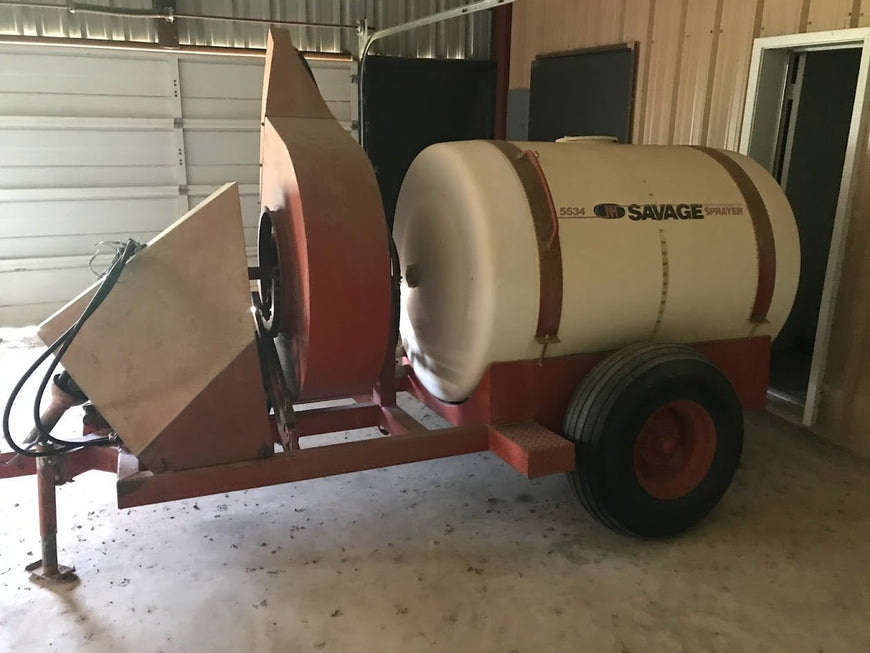
Bluefford G. Hancock, Extension Horticulturist Agricultural Extension Service A&M College of Texas
The commercial pecan grower of Texas is faced with many orchard management problems. These problems should not be singled out and approached on an individual basis. The grower must face these problems and deal with them as a unit. To be successful in pecan growing, the grower needs to develop and maintain a complete and thorough program of production practices. There is no doubt but that one of the most commonly neglected production practices in Texas has been that of insect control. At the same time it is only fair to state that a great deal of progress is being made in this respect. At the present time there is considerable interest in spraying for the control of pecan insects in Texas, particularly for the control of the pecan nut casebearer. In recent years, the number of pecan growers who are spraying for the control of insects has increased by rapid strides. This rapid increase has been brought about by the availability of excellent research information on insect control and because of a. number of extension result demonstrations that have been conducted over a wide area of the state showing that insects can be controlled on a practical and economical basis. Another major factor behind this increase is that pecan growers are realistic. They know that operating a pecan orchard is a business and like all other business ventures, it takes money to operate. They no longer can afford to invest money in a production program and then allow insects to destroy a large percentage of their crop or in some cases, their entire crop.
A number of mistakes have been made and are still being made in developing an insect control program. Too many of us as commercial growers have faced this insect problem in the following manner:
- we would look for the cheapest method of controlling insects.
- we would look for the easiest method, the one that requires the least effort on our part.
- we look for the fastest method, one that will get us through in a hurry.
- we look for a satisfactory method of insect control.
Now all of these factors are important and need consideration, but we have them in reverse order. Our first consideration should be a successful and satisfactory job of insect control. Then and only then should the other factors come in for consideration.
As pecan growers, we are putting too much emphasis on the cost of spraying. It is well to remember that five to eight pounds of pecans will usually pay for spraying one pecan tree for nut casebearer control. We also need to remember that the pecan grower in Texas is indeed fortunate. He needs to spray his pecan trees only one time a year, or two or three times at the most, for insect control. The pecan grower in the Southeast often sprays four to six times a year. The peach and plum growers here in Texas spray their trees many times a year. We must bear down on doing a good job in getting satisfactory insect control---then we can work toward the good of reducing costs. A method that may appear to be the least expensive in initial costs may prove to be by far the most costly in the final analysis. Let's check closely to see if the method we are using for insect control at the present time is giving a high degree of control. We often tell ourselves that we are getting “commercial” control by using a cheap and fast method of application. By making a close check, it may turn out that we are losing as much as a third or more of our crop by following this method. Research over a period of years, followed by demonstrations, has definitely shown that with adequate equipment, by spraying at the proper time and by getting thorough coverage that 90% or better of the pecan crop can be protected from the pecan nut casebearer.
There are a number of phases of pecan orchard management that relate directly to the development of a sound insect control program. Proper spacing of the trees is extremely important in doing a good job of spraying. It is extremely difficult to get satisfactory coverage and to do a fairly rapid job if the trees are spaced too close together. This is a problem that needs attention, not only from the standpoint of doing a satisfactory spraying job, but also from the standpoint of getting good yields of well-filled pecans. Another problem that relates directly to spraying is a matter of controlling competing vegetation in the orchard, particularly during the spraying season. Underbrush and tall weeds should be kept under control to facilitate ease of spraying.
All phases of production practices fit together to make a complete pecan program. Neglect of any one phase can cause serious difficulty or complete failure of the whole operation.

